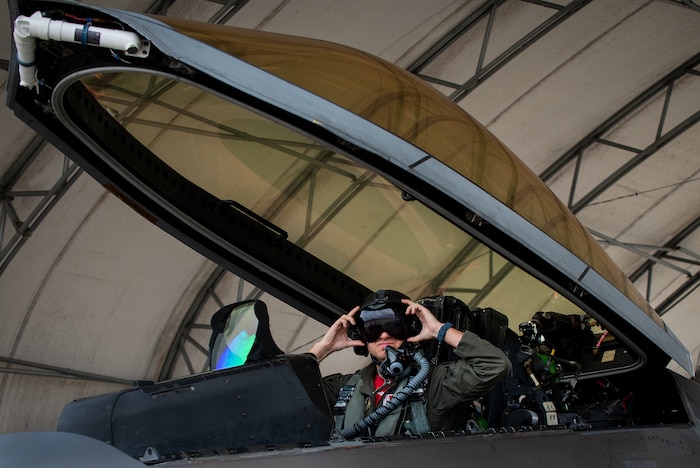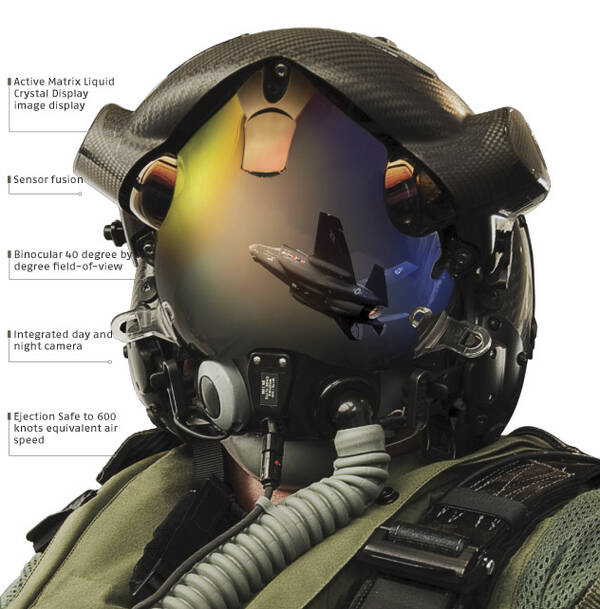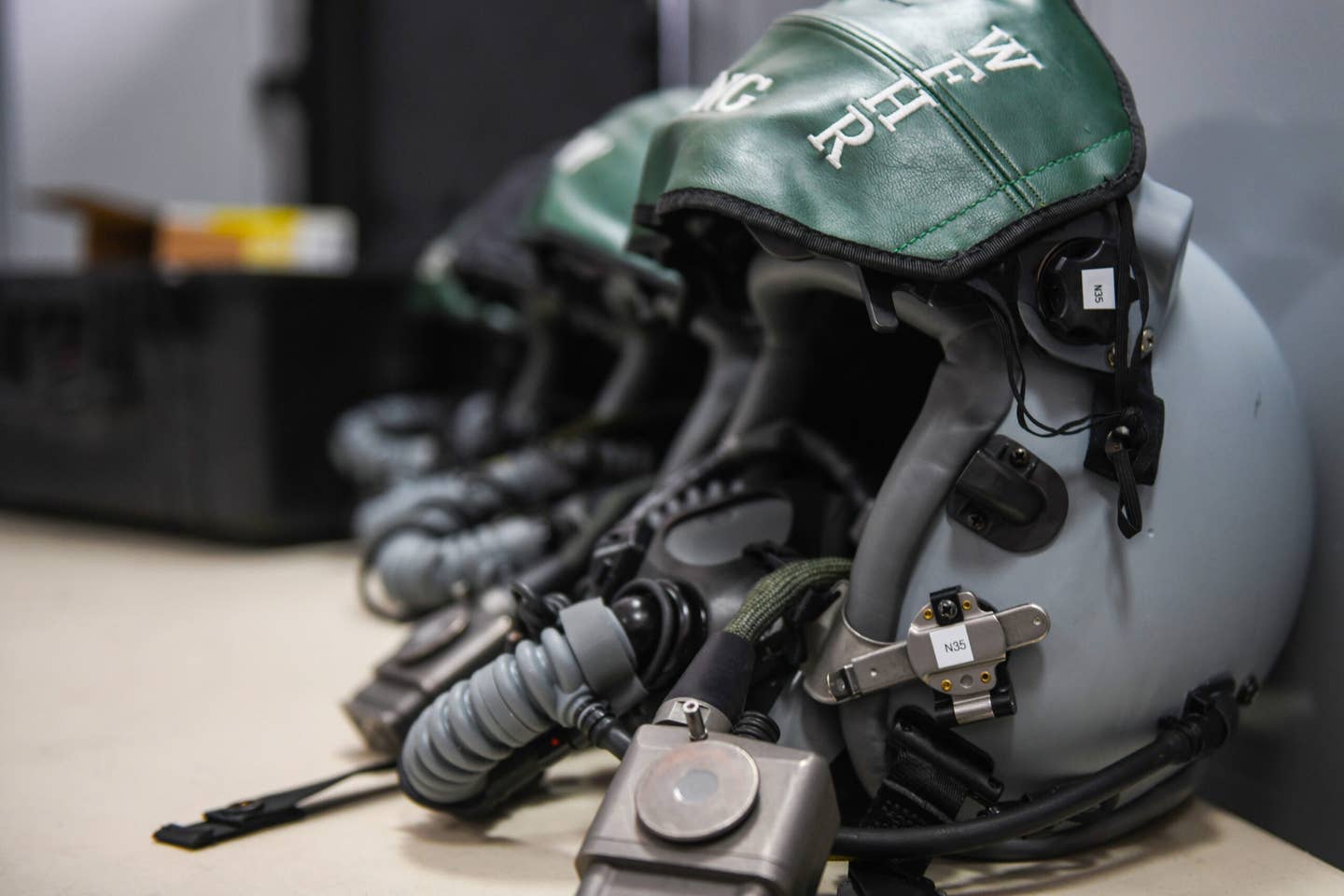The US Air Force (USAF) is testing a next-generation helmet for the service’s fixed-wing aircrew members, according to a press release issued by the service earlier this month.
The new helmet, dubbed the Next Generation Fixed Wing Helmet (NGFWH), is designed based on feedback from the current HGU-55P helmet, first introduced in the 1980s. It is meant to support advances in helmet-mounted display systems while at the same time providing a more comfortable wearing experience to the pilots.
“It is common knowledge fighter pilots have long-term neck and back issues,” said Maj. Brett Gedman, from the 301st Fighter Squadron. “Therefore, having a lightweight helmet, designed with the operator in mind, will have positive long-term impacts on the health of our fighter pilots during and after service.”
The testing was conducted at Eglin Air Force Base and involved approximately five F-22A Raptor pilots from the 301st Fighter Squadron, a Reserve unit with the 43rd Fighter Squadron. Engineers from the 46th Test Squadron and the 28th Test and Evaluation Squadron oversaw the testing.
After each flight, the Raptor pilots report any feedback they may have about wearability, visibility, communication, etc., to the engineers, who then compile this data and provide it to the manufacturers to inform the development of the helmet further.

The USAF said in the press release that, leaving aside some minor tweaks, the feedback from the pilot about their experience with the NGFWH has been mostly positive.
“The helmet design allows for unparalleled visibility, mobility, and comfort in the cockpit,” said Gedman. “The increased visibility combined with the mobility it provides made it a massive improvement over what I am used to flying with. This has been a generational leap in technology that the fighter pilot deserves, which is long overdue.”
Next-Generation Fixed Wing Helmet
California-based LIFT Airborne Technologies is developing the new helmet, and it has officially designated the headgear as AV 2.2 NGFWH.
The latest series of tests marked the second round of developmental trials of the NGFWH since LIFT was awarded the contract to develop the new helmet in 2022.
Reports suggest that the advances in high-tech helmet-mounted devices include developing new helmets for the USAF’s fixed-wing aircrew, excluding F-35 Lightning II pilots who have their own headgear, such as cueing systems and night vision goggles.

According to USAF officials, the legacy HGU-55P was not designed to accommodate these advances in helmet-mounted display systems. This often means the new devices shift their center of gravity when bolted onto the helmet.
“The current helmet was based on a 1980s design. Since then, gains in aircraft technology and the demographic of pilots have changed,” said Scott Cota, ACC Plans and Requirements branch aircrew flight equipment program analyst last year. “The legacy helmet was not originally designed to support advances in aircraft helmet-mounted display systems, causing pilots to fly with equipment not optimized for them, especially our female aircrew.”
According to LIFT, the NGFWH incorporates various new advanced technologies, such as Active Noise Reduction (ANR), which improves speech intelligibility across a broad frequency spectrum to protect crew members from stress and fatigue.
The NGFWH comes with an off-helmet unit called the Aircrew Mounted Power Supply (AMPS), which reduces the helmet’s weight and helps extend its life through its rechargeable lithium-ion batteries, also reducing battery waste.
The helmet features improved stability, reduced size, a carbon fiber shell to reduce helmet weight and crew member neck strain, and a ‘custom fit system’ to provide a more comfortable fit for male and female aircrew members.
The custom fit solution for the NWFGH entails padded liners that can be personalized using any combination of 7-, 10-, or 13-millimeter thicknesses.
The new helmet is available in different configurations, including Joint Helmet Mounted Cueing System (JHMCS) and Night Vision Goggles (NVG). It can also be fitted with nuclear flash protective goggles.

The new helmet will also significantly affect pre-flight preparation and maintenance, which will particularly benefit the Aircrew Flight Equipment technicians, who are responsible for preparing, equipping, and maintaining the helmets for the aircrew.
Several of the flight advancements are now standard on the new helmet, such as night-vision goggle mounts and an adjustable occipital basket, whereas in the case of HGU-55P, these items are added manually, which can take hours to prepare.
For instance, to add a night-vision goggle mount to the HGU-55P, an AFE Airman uses power tools to drill into the helmet to secure the bracket.

“From a pre-flight and build-up standpoint, the new helmet is much better,” said Airman 1st Class Matthew Crouse, a 325th Operations Support Squadron AFE technician responsible for NGFWH maintenance during the testing. “It makes our job much easier in the long run, but because it’s so easy to adjust, we can make corrections if needed.”
Furthermore, the currently worn HGU-55P weighs around 2.2 pounds (0.997 kilograms), as per the information provided by the manufacturer, Gentex. Now, this load is multiplied when a pilot performs a high-G maneuver.
For instance, let us assume the headgear weighs around three pounds after adding clip-on devices, which, as stated earlier, will also shift its center of gravity. Now, if a pilot wearing this helmet pulls 9Gs, the load of his headgear will turn into an equivalent of 27 pounds.
Whereas the LIFT-manufactured NGFWH, made mainly out of carbon fiber, was 42% lighter with head-worn weight compared to its competitors for the NGFWH program.
Another round of testing is due to happen at Joint Base Langley-Eustis, Virginia, once the Raptors squadrons and test engineers arrive from Eglin AFB. These tests will then be conducted on the HC-130J and B-1B Lancer.
If testing goes well, LIFT plans to start the production of the helmets in 2024 and deliver them in phases, beginning with the F-15E Strike Eagle.
- Contact the author at tanmaykadam700@gmail.com
- Follow EurAsian Times on Google News




